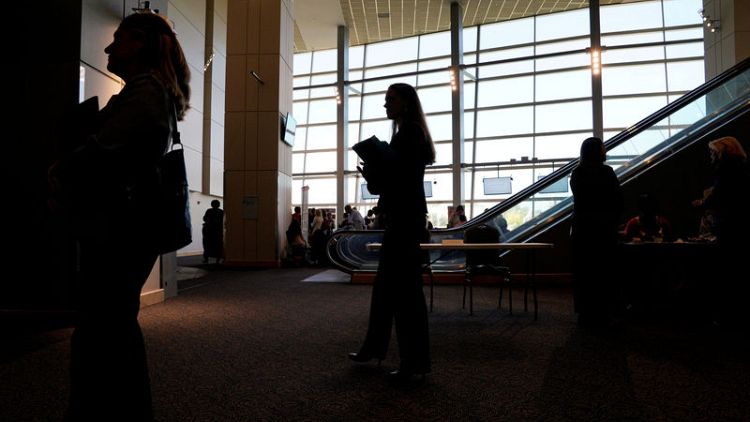By Jason Lange
WASHINGTON (Reuters) - The number of Americans filing applications for unemployment benefits fell sharply last week, suggesting the labour market was holding firm despite a manufacturing slowdown and concerns the economy is on a path towards recession.
Initial claims for state unemployment benefits dropped 12,000 to a seasonally adjusted 209,000 for the week ended Aug. 17, the Labor Department said on Thursday.
The decline was sharper than expected. Economists polled by Reuters had forecast claims would drop to 216,000 in the latest week.
U.S. stock index futures held onto gains following the data's publication.
The four-week moving average of initial claims, considered a better measure of labour market trends as it irons out week-to-week volatility, edged up 500 to 214,500 last week.
Last week's claims data falls during the same week the Labor Department conducts surveys used to estimate national employment during the month of August.
The four-week average for new unemployment benefits claims was lower than the corresponding week in July, a positive signal for employment during the month.
There are few signs a bitter trade war between the United States and China was spilling over to the national labour market, although growth in manufacturing jobs has slowed this year.
While hiring has cooled, the pace of job gains remains well above the roughly 100,000 needed per month to keep up with growth in the working-age population.
The trade war has fuelled concerns among investors that a recession looms over the U.S. economy. Some yields on shorter-term Treasury debt have risen above longer-term yields, a development viewed as a classic recession signal.
Concerns over the impact of the trade tensions between Washington and Beijing on the U.S. economic expansion, the longest on record, prompted the Federal Reserve to cut interest rates last month for the first time since 2008.
At the same time, minutes for last month's Fed policy meeting released on Wednesday suggested policymakers were divided over the cut and did not want to give the appearance that they were planning further rate reductions.
Thursday's claims report also showed the number of people receiving benefits after an initial week of aid fell 54,000 to 1.67 million for the week ended Aug. 10. The four-week moving average of the so-called continuing claims fell 750 to 1.70 million.
(Reporting by Jason Lange; Editing by Andrea Ricci)



